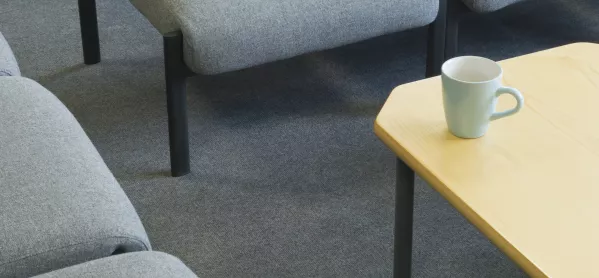- Home
- It’s good to talk in the staffroom - if you have one
It’s good to talk in the staffroom - if you have one

It is 1975, my first term in teaching. Like all my newly qualified colleagues, I finish each day physically and mentally exhausted, wondering if I can keep this up. I have non-contact periods like this one ringed on my timetable, respite between classes. Already I love my job, but it’s a steep learning curve.
Departmental bases are cramped, so, like everyone, I head for the staffroom, for marking and a cup of tea.
Because of timetable construction, you seldom find a member of your own department there, but, with only a couple of staff in occupation, there is almost an imperative to chat.
News editor’s take: Save our staffrooms
A former headteacher’s view: ‘Bring back staffrooms and long lunchtimes’
One teacher’s view: Here’s what teachers gain by ‘boycotting’ the staffroom
My heart sinks. The only one there is Eric, head of history. He seems old to me, looks like Ronnie Barker, talks like Lord Grantham from Downton Abbey, and has a background in the Diplomatic Corps overseas.
I am still student-dressed, hair to my shoulders and a Zapata moustache. We are apparently opposites, and we have never spoken. I consider turning away, but politeness wins out, and I sit opposite him with my pile of books and my mug of tea, trying not to break the silence.
Eric puts down his paper.
“Well, Seán, how is it going so far?”
I’m so tired I can’t generate a formulaic reply, and, having just taught a difficult class, I blurt out the truth.
“It’s hard work, Eric. They are great when they listen, but....”
I can’t imagine he has classroom problems, with his inescapable air of authority, but his answer still resonates today.
“Yes, they are...but do you know, I think part of the trouble is that some of these pupils have nobody who listens to them, so they find it hard to listen to others.”
Listening to the ‘elders of the tribe’
The first of many lightbulb moments I would experience during a succession of, apparently, “casual” staffroom conversations.
They were so effective because you chatted with colleagues from other departments, generations and backgrounds, and, inevitably, you learned from them - like young bloods listening to the elders of the tribe: different perspectives, shared experiences, shafts of insight, in an informal, relaxed atmosphere.
Nobody suggested you go to the staffroom for “continuing professional development”, it happened almost organically, and it played a huge part in the growth of our teaching skills. I can remember far more “learning moments” from staffroom chats than I can from official in-service courses.
At break and lunchtime, the staffroom was a social centre. People sat in friendship groups and received support and positive reinforcement from their colleagues. Communication was informal and immediate, promoting teamwork and understanding. I remember one end of term when the heidie’s wife, also on the staff, led us all in a round of dancing “in and out the dusty bluebells”, her “remedial” skills coming in useful!
Later in my career, staffing reductions reduced non-contact periods, pressure of paperwork meant breaks and lunchtimes spent working in the departmental base. The staffrooms often lay empty and inevitably were considered a “waste of teaching space” in new-build schools.
To offset this loss, my depute colleague and I would wander the school, mobile versions of the Muppets’ Bert and Ernie, pausing and chatting to any staff we met; and our doors were always open, particularly to newly qualified staff, and no appointments necessary. However, in reality, that was a poor and rather forced substitute for the natural conversations we remembered from our own probationer days.
Communication is so crucial to all teaching and learning - and that applies to staff as much as to pupils. In the staffroom, as well as the classroom, it’s good to talk.
Seán McPartlin is education and welfare officer at Hibernian Football Club. He previously worked as a teacher for 38 years
Keep reading for just £1 per month
You've reached your limit of free articles this month. Subscribe for £1 per month for three months and get:
- Unlimited access to all Tes magazine content
- Exclusive subscriber-only stories
- Award-winning email newsletters